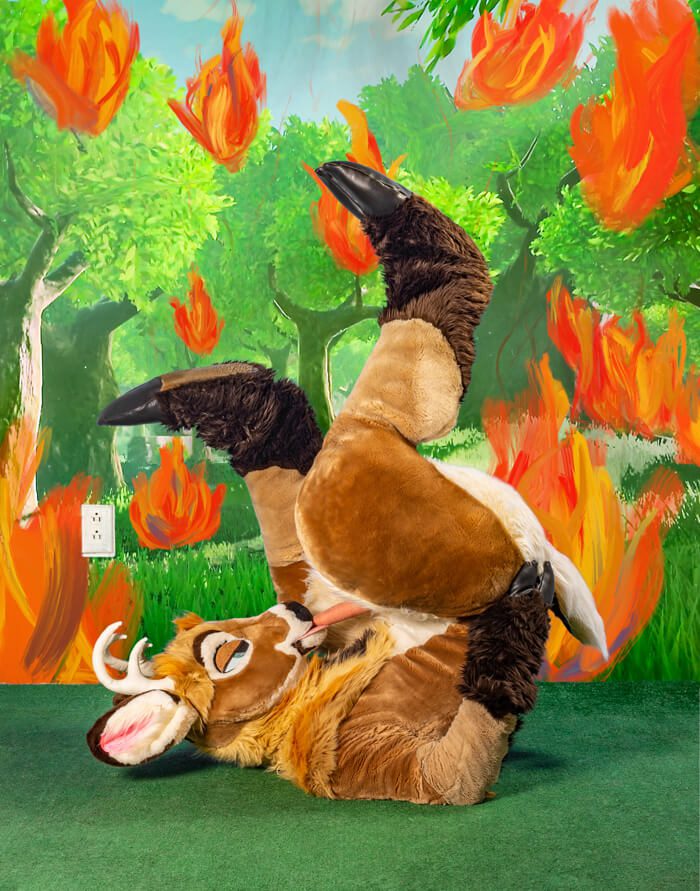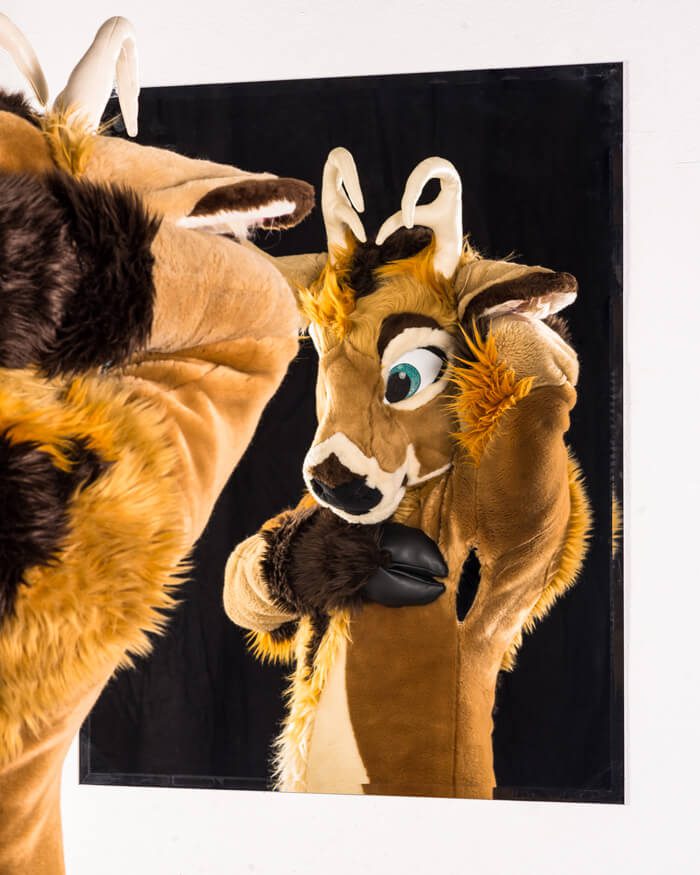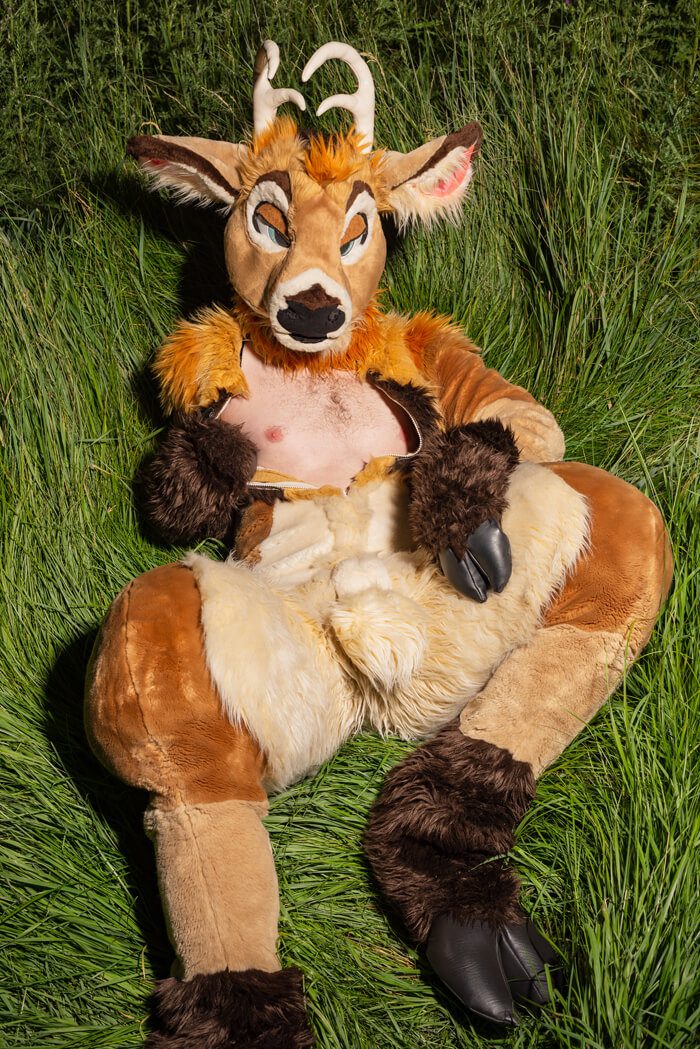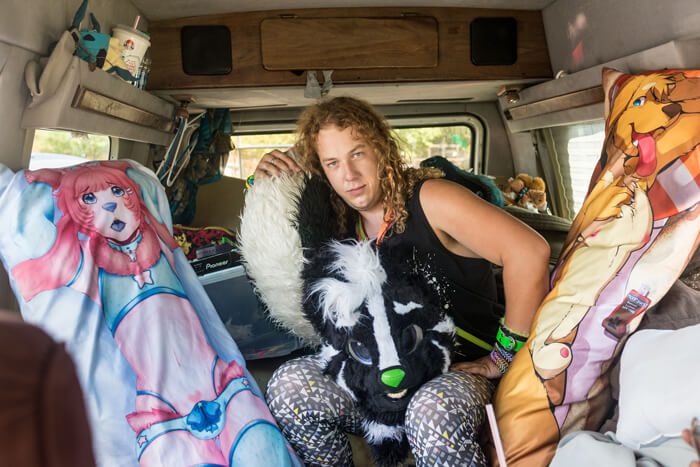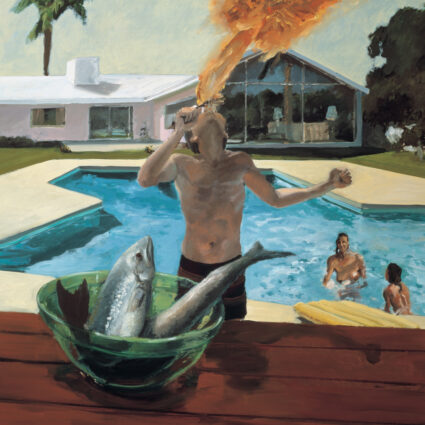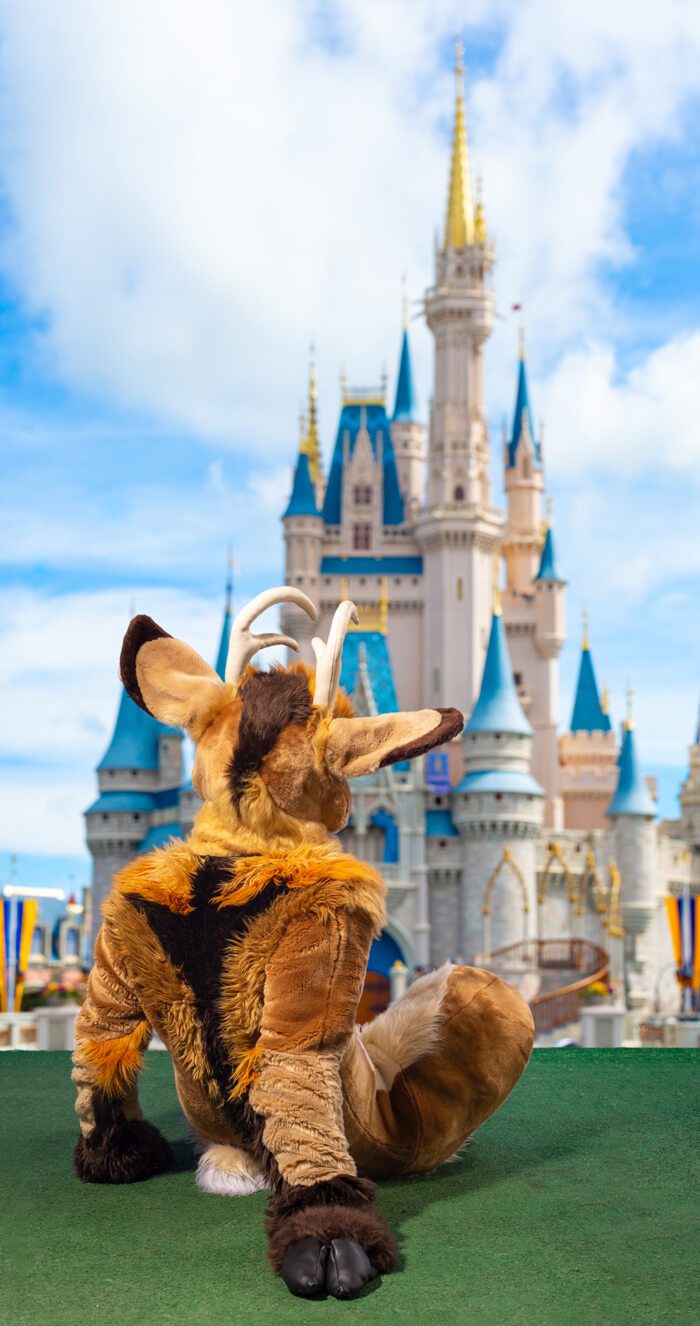
In Outside the Castle (2019), Atmus the deer sits on a lawn outside Disney’s Cinderella Castle. If this were a photo of a standing, front-facing Mickey Mouse, smiling with his arms raised joyfully, we wouldn’t think twice. We wouldn’t question the person in the suit or wonder what right they had to be there.
But Atmus is a fur-suit. The person inside is Tommy Bruce. The lawn is artificial. And the castle is an image. Bruce is a furry. In his words, he is a member of “an internet-based social identity community, where participants create and interact through anthropomorphic animal avatars.” He goes to furry conventions, participates in online discussions, documents the community, and takes self-portraits in his fur-suit.
Like other viewers, we might wonder, “Aren’t furries just adults pretending to be children?” We might ask, “What about copyrights?” and “Is this about sex?”
The answer to the last question is easy: yes, it’s about sex. Or it is occasionally and for some. Other furries might deny it, perhaps out of fear or shame, but Bruce denies shame. Look at the images in this portfolio, especially Self-Care #1 (2019) or Atmus Unzipped (2018) but even Predator and Prey #2 (2019). It has that Georges Bataille erotic-torture feel.
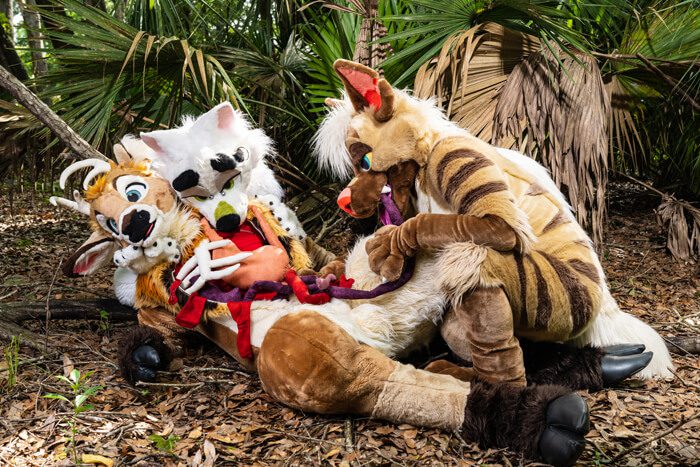
Bruce’s work, which showed at Review Santa Fe in October [2019], responds more directly to the first two questions. I’m going to be a little flippant about it and then make a valid point. What is the difference between a furry convention and Comic-Con? How is a fur-suit different from donning an avatar in a video game? What about a soccer jersey or, I don’t know, camouflage? Aren’t we pretending or, if you prefer, suspending our disbelief to participate in a community or identity? (Also, are these activities about sex?)
The difference is that sports, entertainment, gaming, and hunting are industries. That is, they are “adult” because they participate in the economy. They generate capital and reinforce heteropatriarchal values through scripted forms of performance and participation. If you go to an Isotopes game, you sing “bah-bah-bah” to “Sweet Caroline.” If you go to Disney World, you take a photo with a joyful Mickey. If you hunt, you display your kill on the wall.
Furries, on the other hand, make their own narratives. They have sex. They miss their cues. Between the longing to be recognized and threat they pose to social, political, and economic norms, they fail. They sit literally and figuratively outside the castle, like Atmus.
